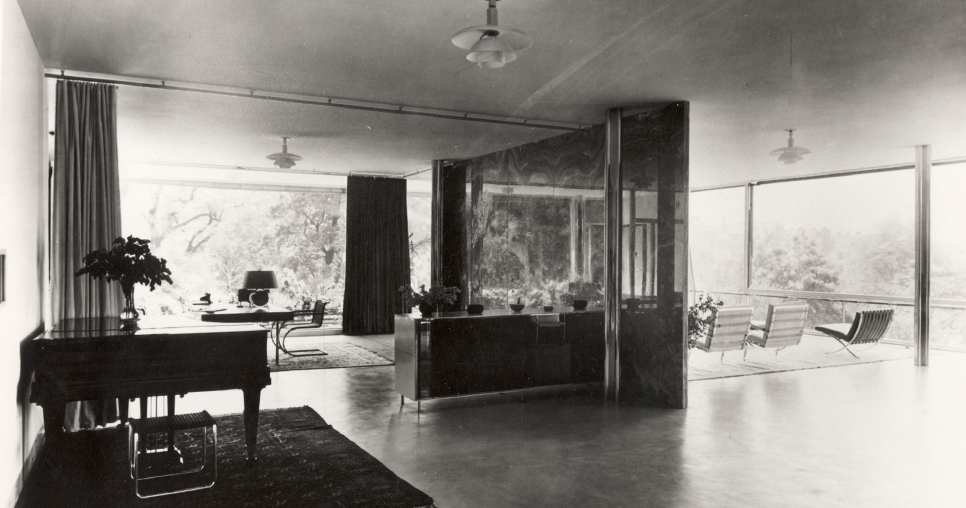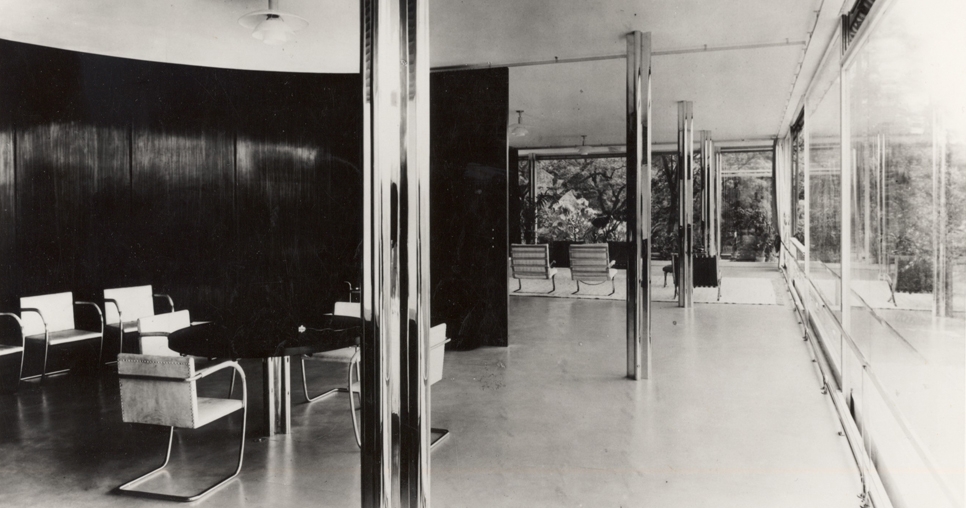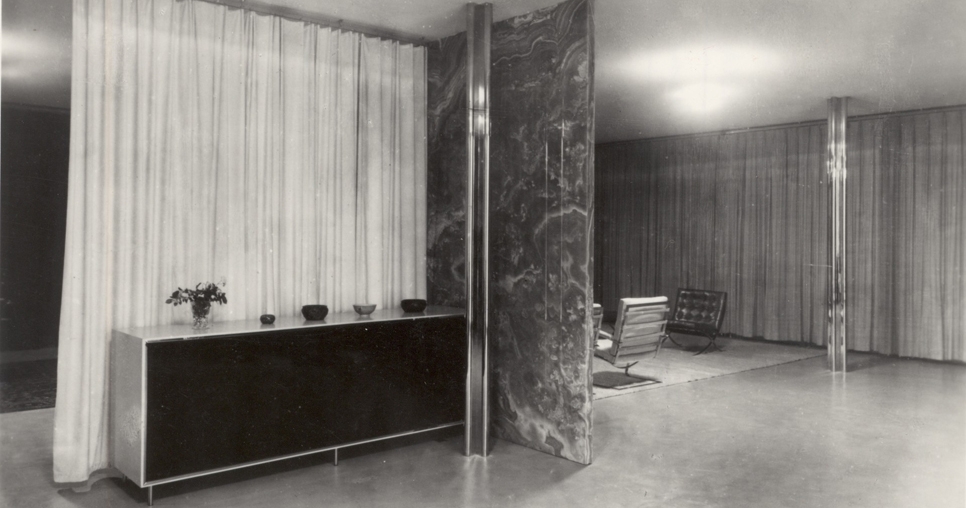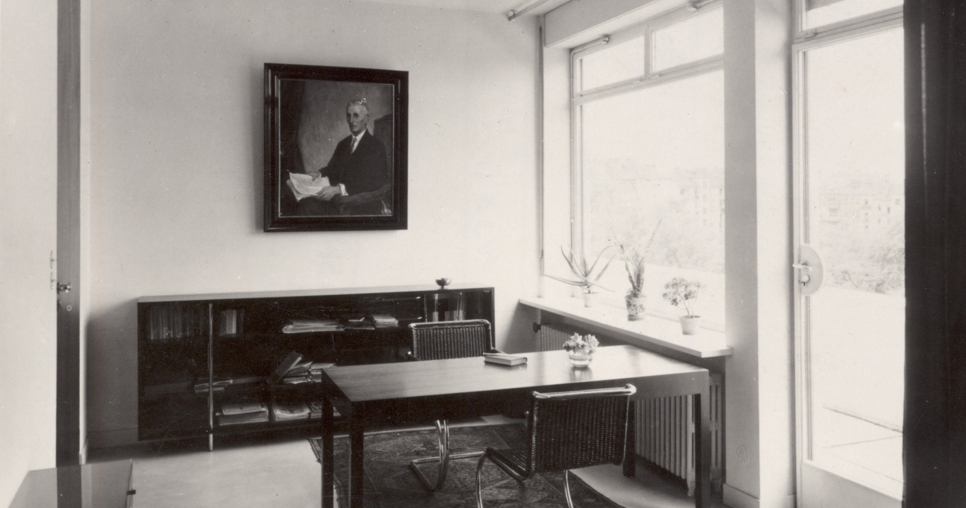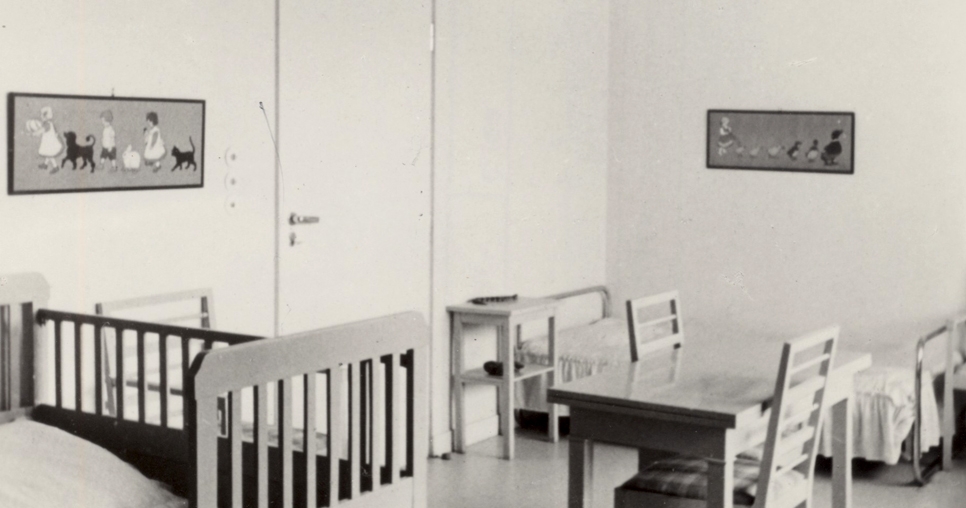Main living area, 1930s
The inner furnishings of the house were designed by Ludwig Mies van der Rohe along with his colleagues Lilly Reich and Sergius Ruegenberg. The furniture was primarily from tubular and strip steel as well as from noble woods (rosewood, zebra wood and Macassar ebony). Three 'Tugendhat' armchairs stood in front of the onyx wall upholstered in silver-grey 'rodion' material, three 'Barcelona' armchairs and a stool in emerald green leather, a glass table and a white bench. A colour accent was provided by a reclining chair with ruby red velvet upholstering. 'Brno' chairs made from tubular steel and upholstered in white sheepskin were situated around the round dining table from black polished pear wood. Chairs were placed next to the glazed milk wall and in the library. Two 'MR 20' wicker armchairs faced one another next to the writing desk behind the onyx wall. The majority of the metal furniture was produced in Germany (Berliner Metallwerke Josef Müller and Bamberg Metallwerkstätten). The built-in furniture and part of the free-standing items were produced in the Brno firm Standard Flat Company of the architect Jan Vaňek which at the same time realized part of the interiors of the Müller Villa in Prague by Adolf Loos. Vaňek's firm apparently also installed the curved inner wall from Makassar ebony. “Mies had a round table designed for the circular dining room with one metal leg, in the exact form of the iron columns, which could also be retracted into the floor. The table top was from black pear tree wood. The reverse side had metal rails in order to enlarge the table to twice the size.”
The architect and designer Lilly Reich contributed significantly to the conception and design of the interiors. She cooperated with Mies on the exhibition for the German Werkbund 'Housing' at the Weissenhof housing estate in Stuttgart as well as on the exhibition of fashion and silk in Berlin in the year 1927. A turning point in their cooperation became the design for the World Exhibition in Barcelona in the year 1929. Reich created the furnishings of the flat for Mies' house in Weissenhof where the floor surfaces were covered in linoleum in red, blue and white colours while the particular spaces were separated by light curtains which served to regulate the lighting of the interior. The principle of 'flowing' space from the exhibitions in Berlin and Barcelona was consequently applied in the Brno Villa. The selection of materials and the colour scheme of the textiles were fully supervised by Lilly Reich. “All of these combinations of colour were tried out a number of times by Mies on site along with Lilly Reich. There were also of course the curtains and carpets: in front of the onyx wall was a handwoven rug from light natural wool while behind the onyx wall was also a hand woven rug from brown natural wool. There were Persian rugs in the library and under the wing which we chose ourselves. The peculiar black colour of the shantung curtain in front of the conservatory was similarly carefully chosen to fit with the black velvet curtain hanging nearby and with the silver-grey shantung silk at the rear wall. A white velvet curtain hung between the entrance and the library, allowing this part of the living area to be completely closed off, thereby creating an intimate seating space. The furniture in the upper rooms was also designed with the same care.” The authorship of the book shelf behind the writing desk in Fritz Tugendhat's room has also been attributed to Lilly Reich, as a writing desk next to a window with a low bookshelf behind it was a typical interior composition a la Lilly. She was also apparently the author of the white cabinet with dark glazing in the main living area the construction of which reflects the principle of the steel structural system of the house.
The creative contribution of Sergius Ruegenberg is less apparent. He produced a number of drawing designs for the house including for the interiors. Mies entrusted him, for example, with developing a suitable armchair for the Barcelona pavilion, the model for which was Mies' earlier designed stool. A range of Ruegenberg's sketches have survived, in which one can observe, amongst other things, the shape of the 'Tugendhat' armchair.
The only art work in the interior was the statue of a female torso by Wilhelm Lehmbruck from the year 1913. After consultation with Mies it was chosen instead of the originally planned statue by Aristid Maillol and soon became very popular with the Tugendhats.

